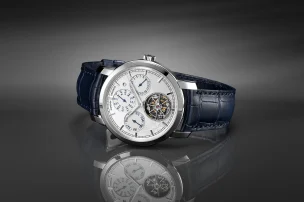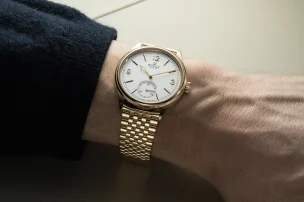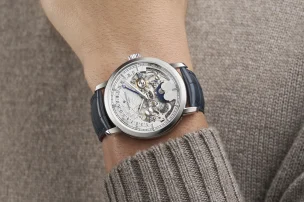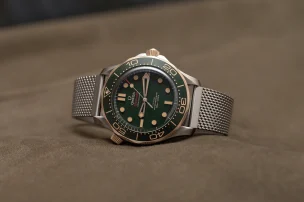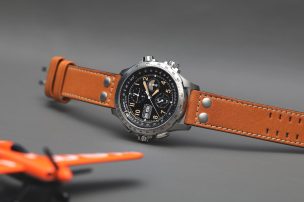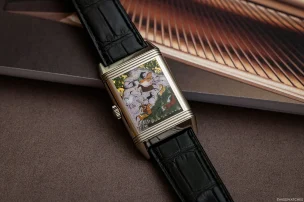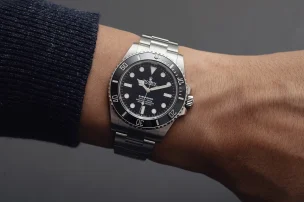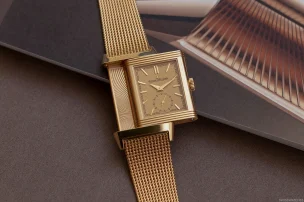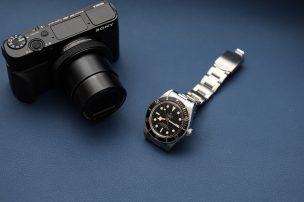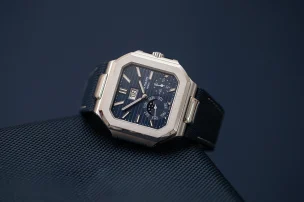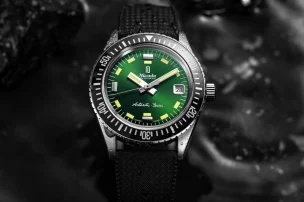
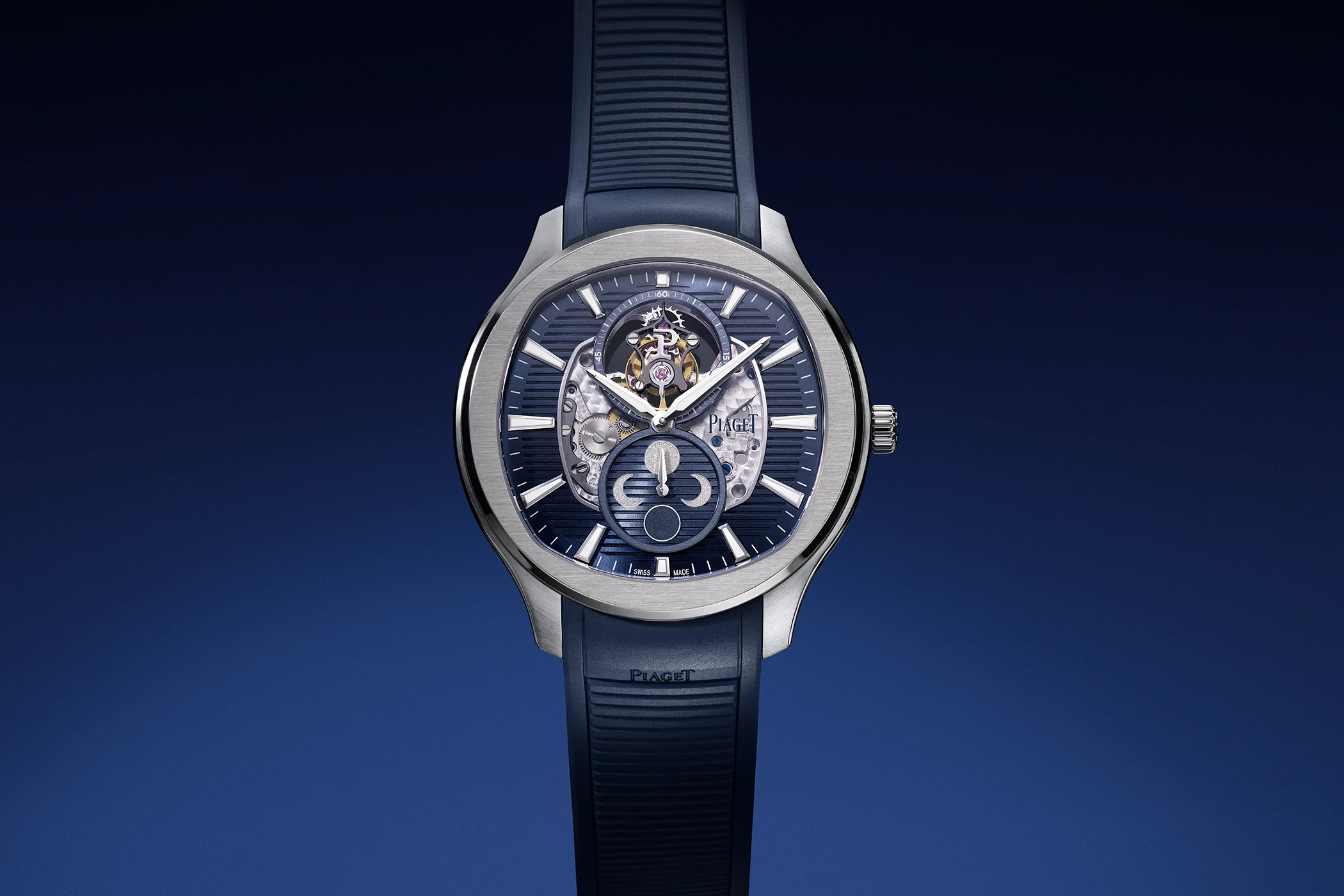
New Complication Joins The Piaget Polo Series: Polo Flying Tourbillon Moonphase in Titanium
Every watch manufacture has one or more iconic models that have enjoyed great popularity for years. For Piaget, the Polo watch line is one of them. Since its launch in 1979 as the brand’s first sports watch, it has established itself as the Maison’s best-selling collection. Thanks to the Polo, the watch manufacture has already repeatedly proven how versatile an icon’s evolution can be, all while remaining true to itself through certain recognisable design elements. With the Polo Flying Tourbillon Moonphase as the latest addition to the collection, the brand is now presenting a model that will no doubt impress its followers with its large complication and a felicitous blue and grey colour combination.

Before we examine the watch in more detail, let’s take a brief look at the history of the Polo and its various iterations in order to fully appreciate exactly how Piaget continues to successfully reinvent the Polo at the highest level of craftsmanship.
Piaget Polo: A brief History
The Piaget Polo has been around since 1979, but over the decades it has changed and evolved time and again. The first Polo appeared with a case and bracelet made of solid 18-carat yellow gold and embodied a sporty, elegant aesthetic through round (Ref. 761C70) and square (Ref. 7131C701) models. Its choice of material made the timepiece stand out in particular, as it represented a kind of counter-movement to the stainless-steel watch trend of the time.
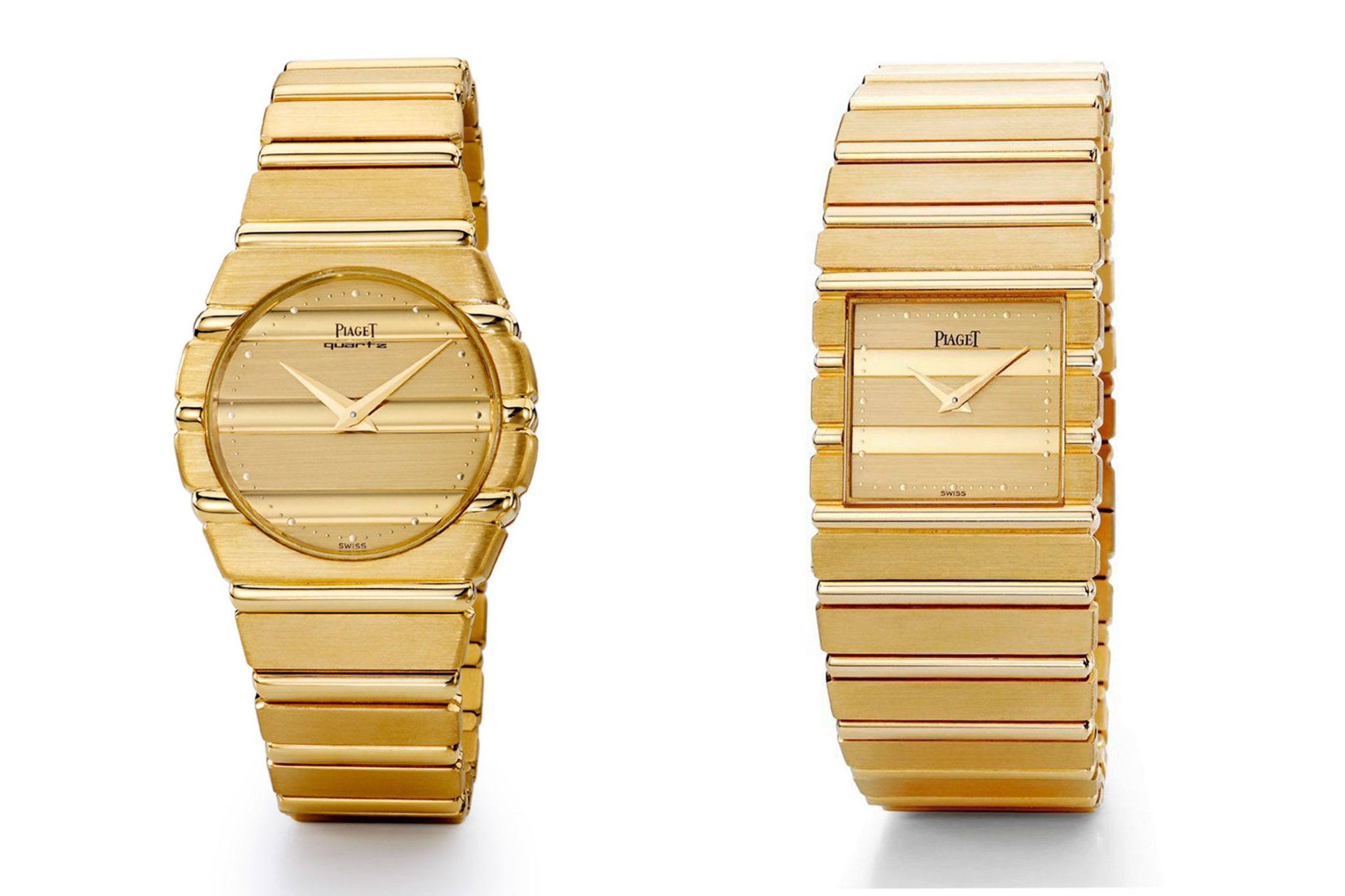

In addition, the seamless transitions between the case and bracelet with their narrow, spherical, highly polished links and flat, larger block links added to the watch’s striking appearance. Today, these gadroons are still the Polo‘s trademark and can be found in different variations on the case, dial, and bracelet. It was only last year that Piaget relaunched the original watch from 1979 as the Polo 79.
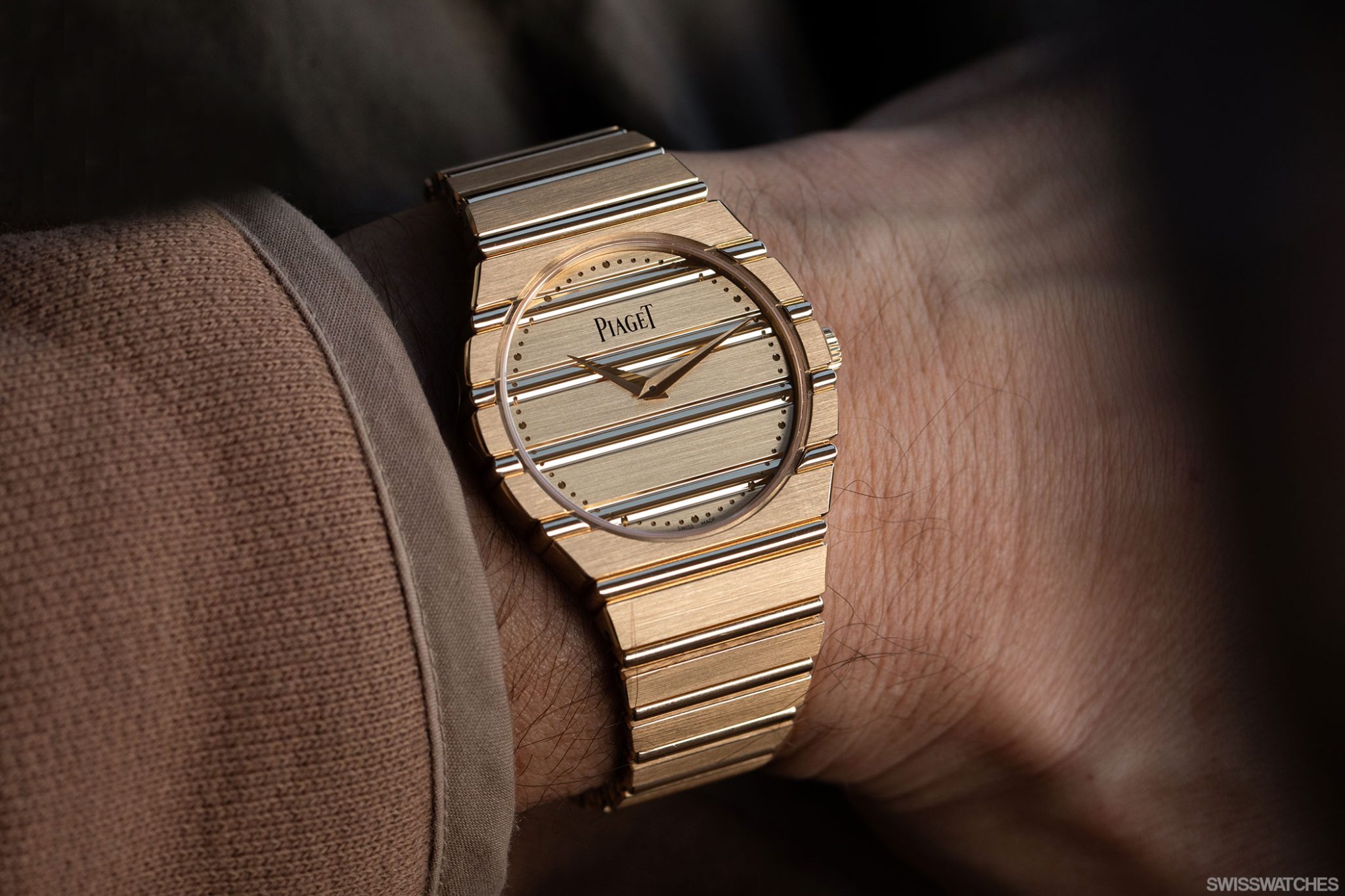
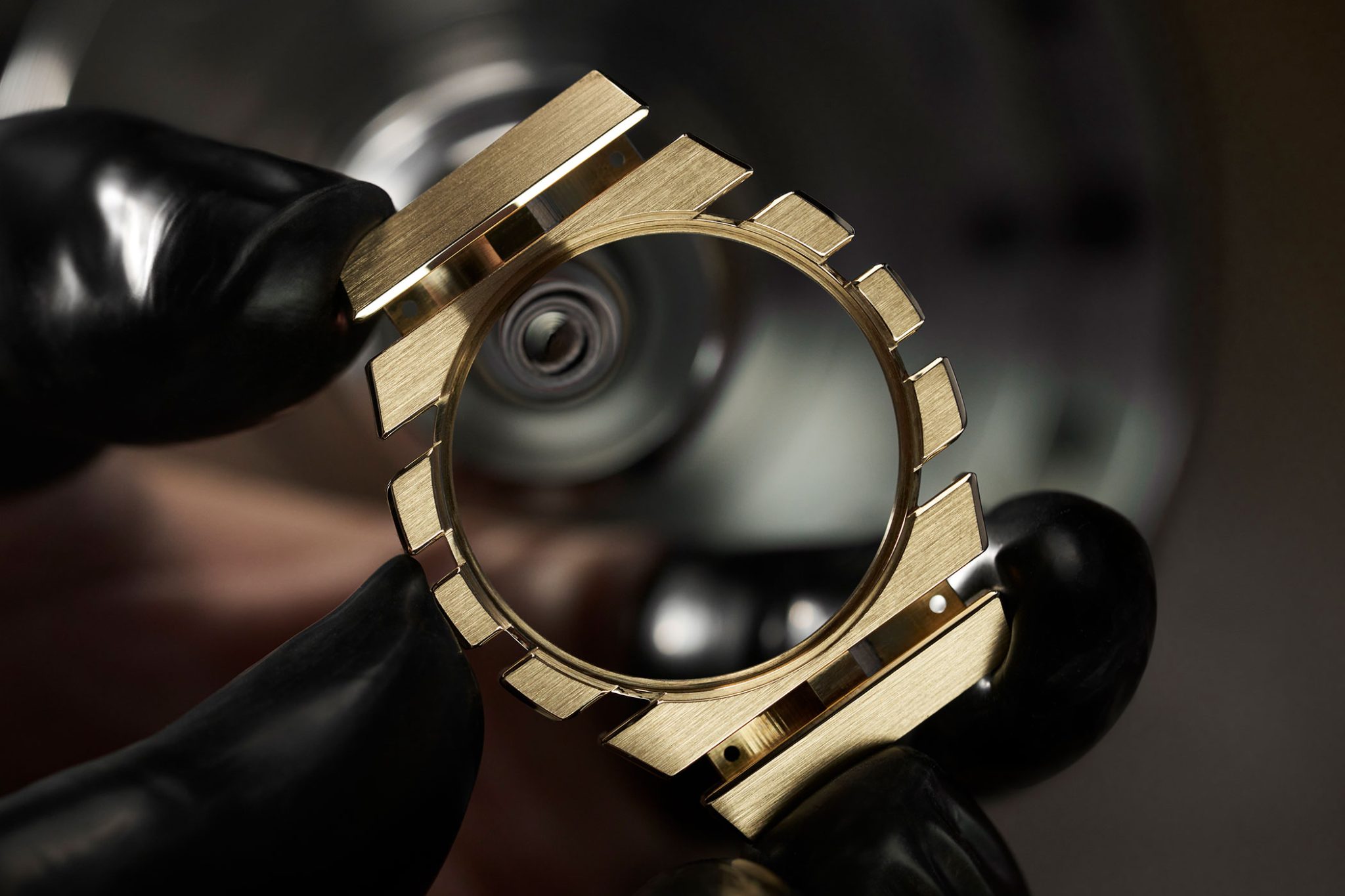
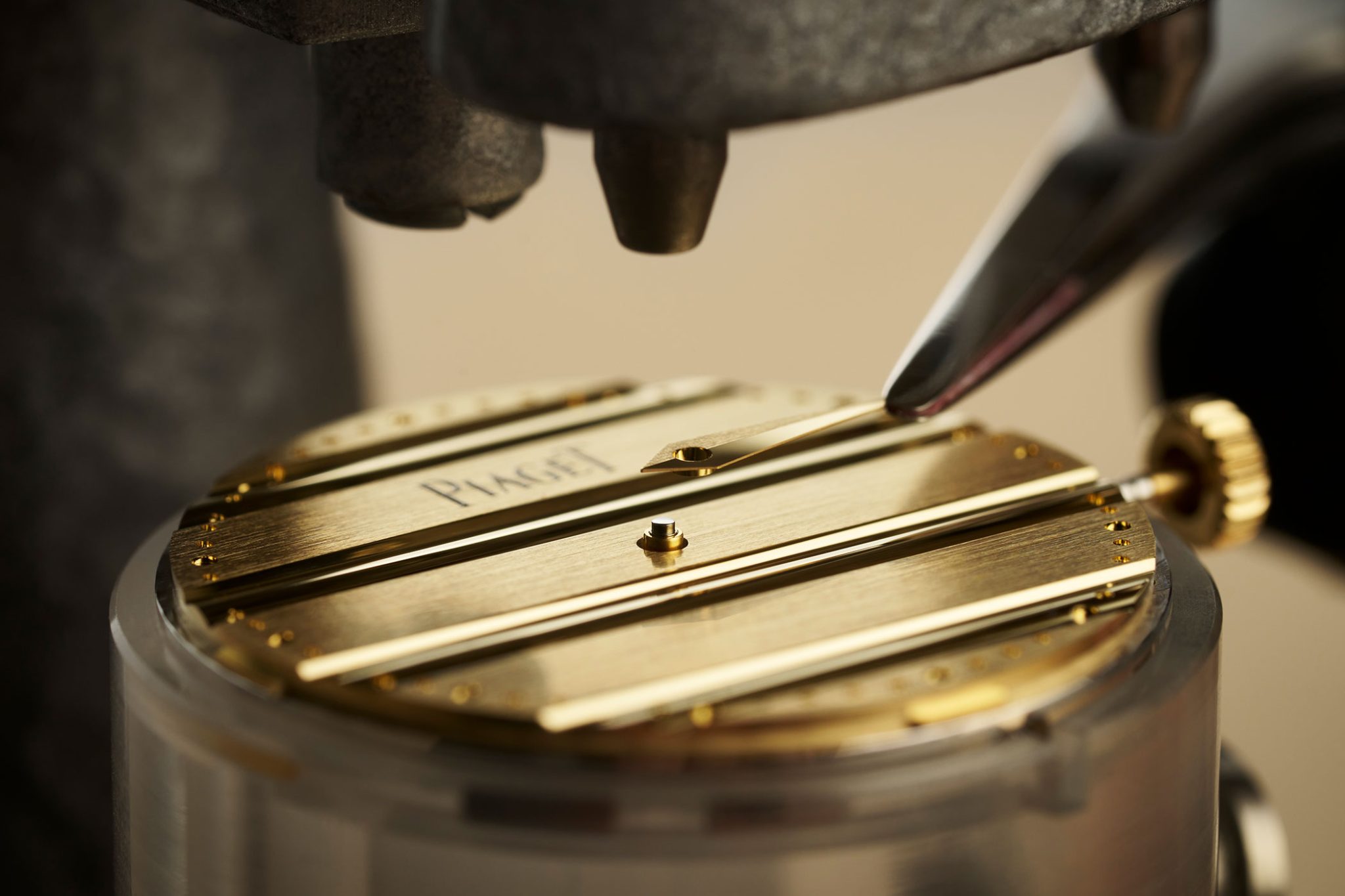
In addition to the gadroons, however, there is another feature that also characterises today’s Polo models: an ultra-thin calibre at its core. While the first Polo was equipped with the world’s thinnest quartz movement at the time, the in-house calibre 7P, with a height of just 3.1 mm, today Piaget mainly uses ultra-thin manufacture movements with automatic or manual winding for the Polo.
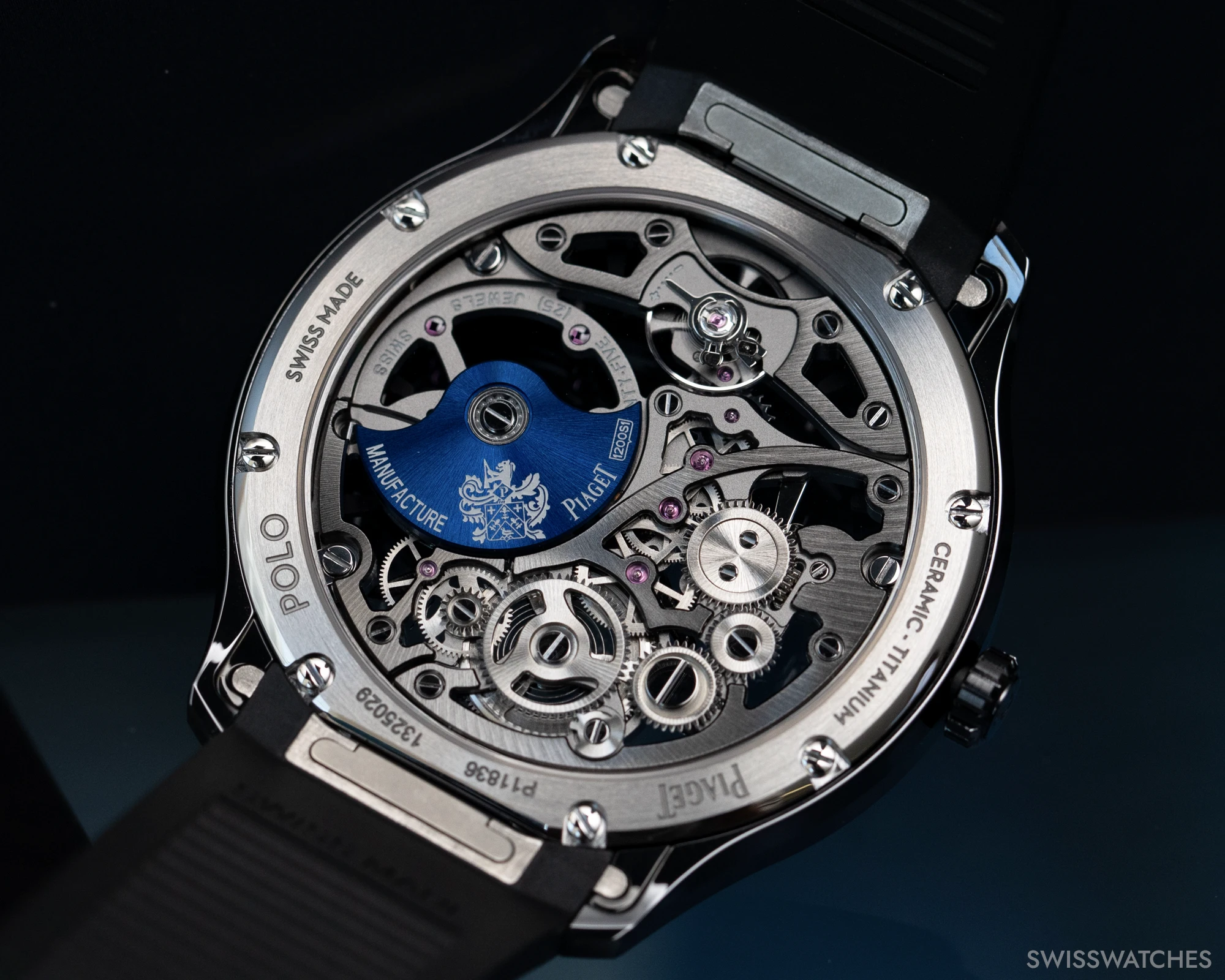
This shift to mechanical movements began in 2001, after the Polo had been out of production since 1988 following the acquisition of Piaget by Richemont. The early 2000s not only meant a technical change, but also a complete facelift for the Polo, my colleague Nico Bandl describes it in his article on the Polo’s history.
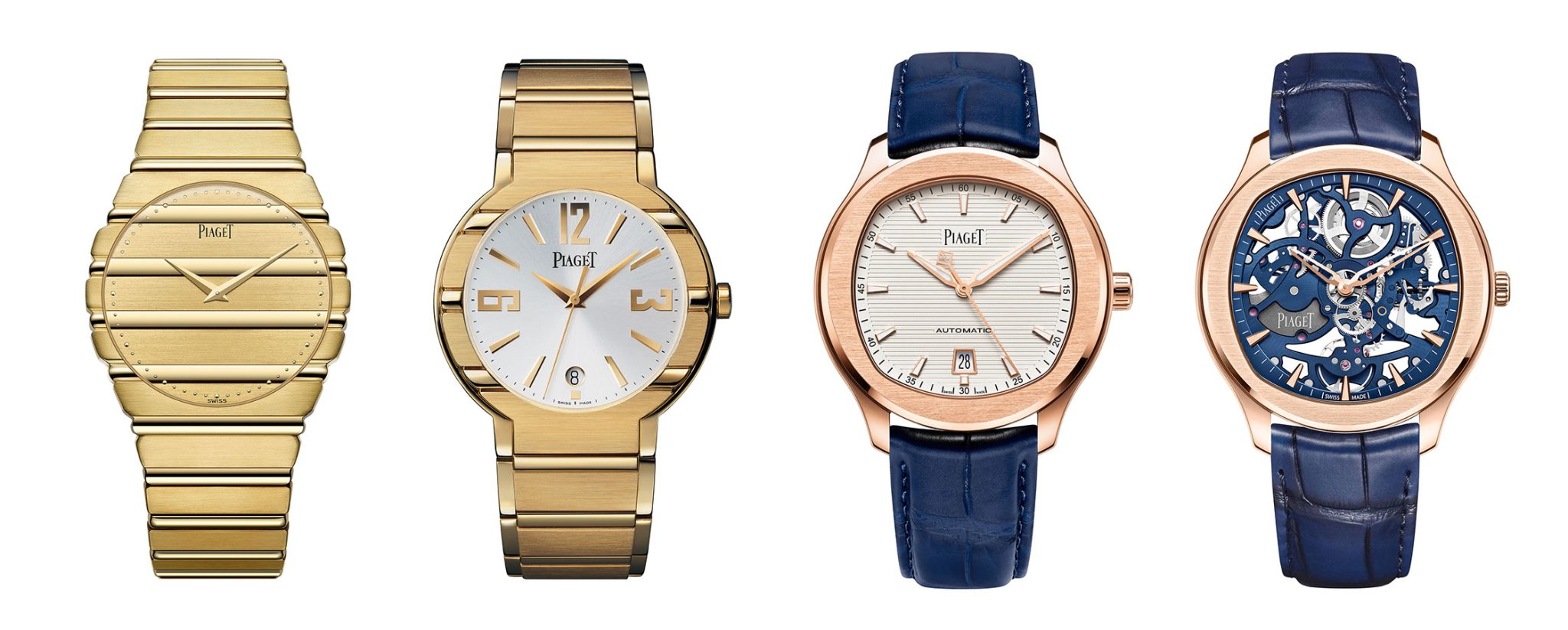
Until 2015, the Polo was characterised above all by gadroons on the integrated strap and case, although this design element was dispensed with for the dials. In addition, Arabic numerals replaced the dot-shaped hour and minute markers and the model was given a larger diameter.
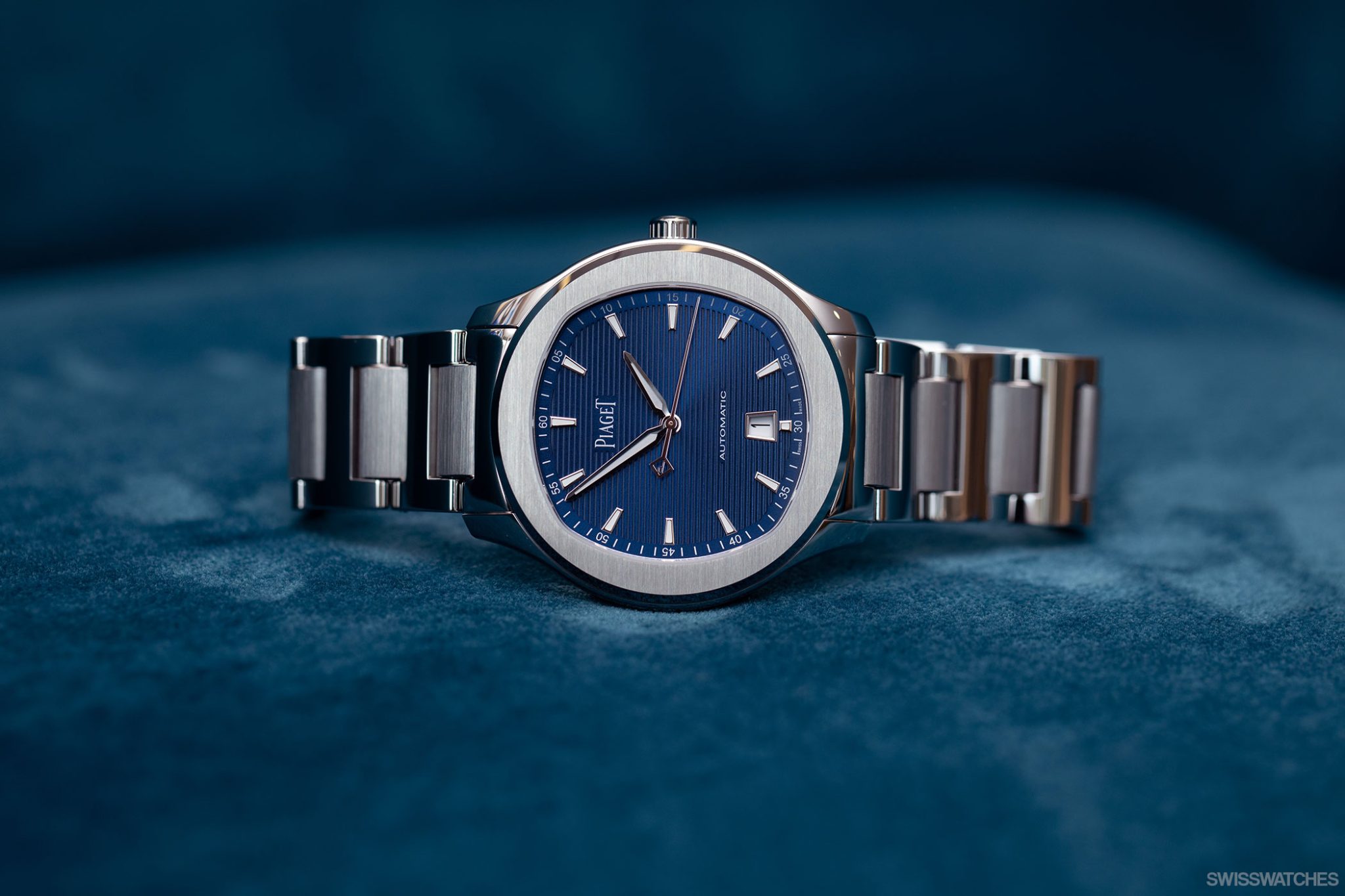
2016 finally marked a new era for Polo with the launch of the Polo S, a model with a steel case, and a first for this watch series. In the years that followed, the Maison launched numerous Polo models, with which it ventured to ever new technical heights. This includes the Polo Skeleton with a skeletonised high-performance movement measuring only 2.4 mm in height, and the Polo Perpetual Calendar Ultra-Thin, released in 2023, featuring an ultra-flat perpetual calendar and a gadroon-pattern dial.
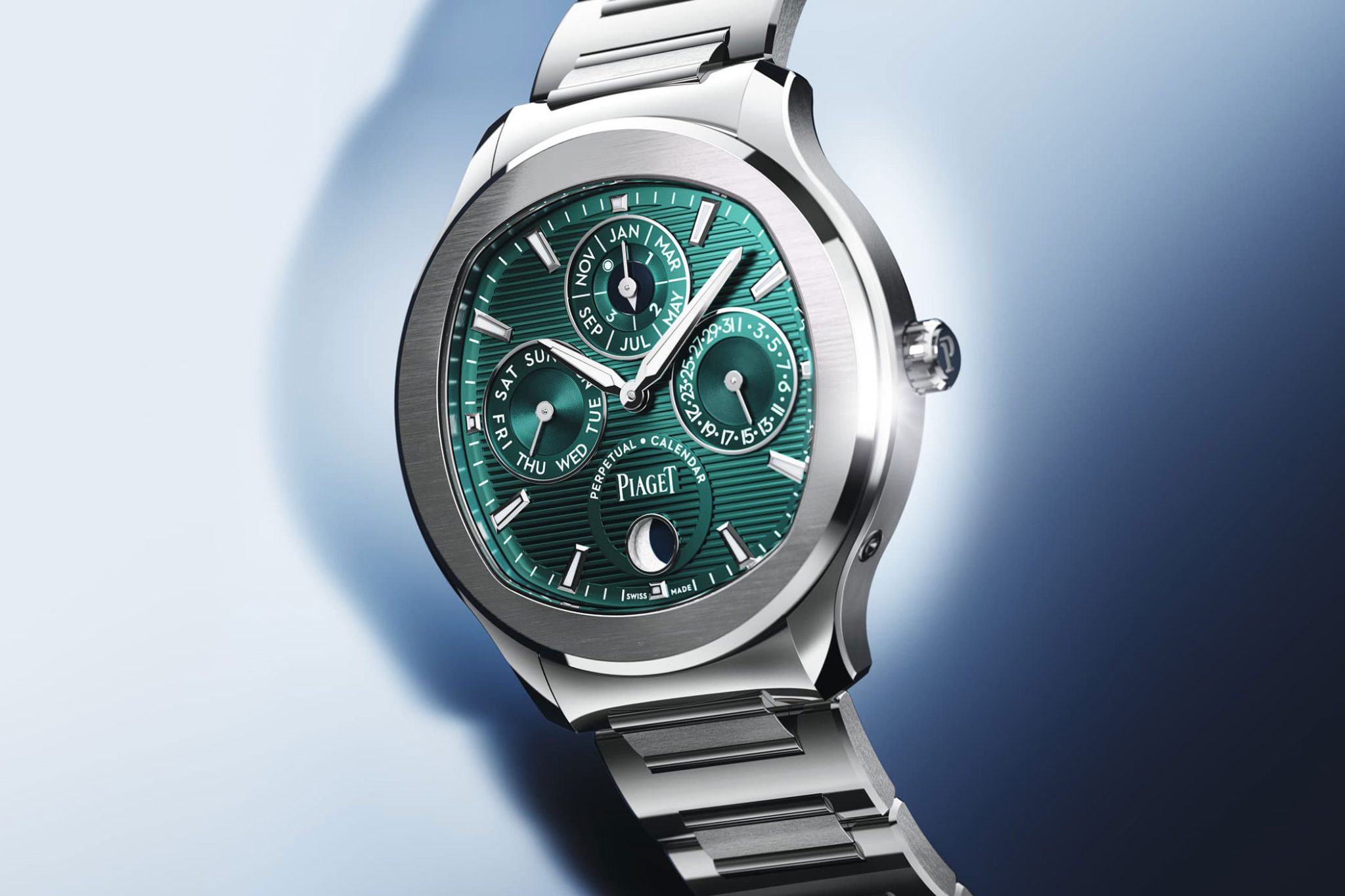
However, Piaget is not only consistently reinventing the Polo from a technical point of view; there are also always new developments when it comes to the choice of materials. Last year, for example, the manufacture, which actually specialises in gold, launched the Polo Skeleton Ceramic, the first Polo model made from the hypoallergenic and extremely lightweight material.
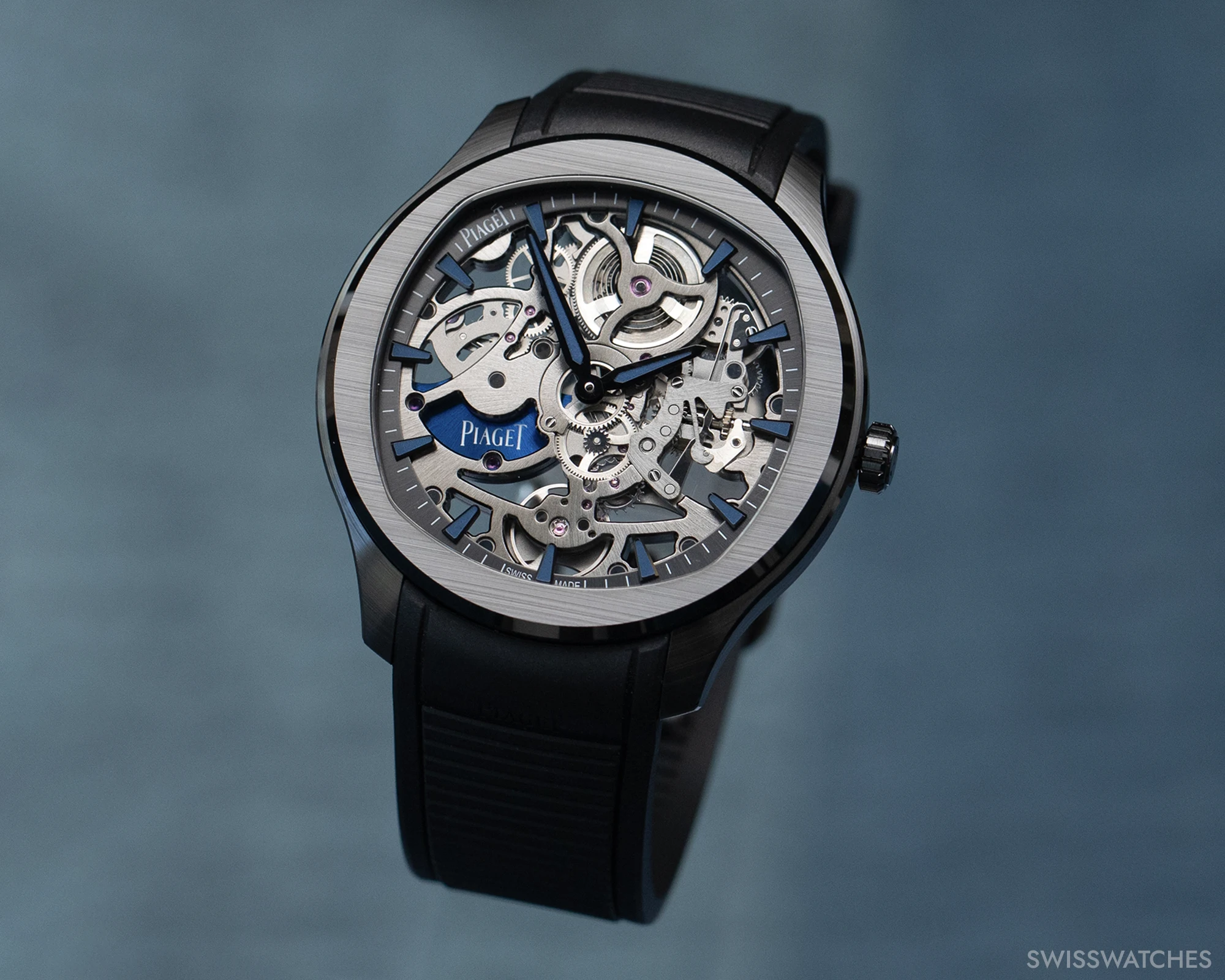
Despite all the iterations, the Maison has not lost sight of one thing: the sporty and elegant character of the Polo. The latest addition to the Polo collection, the Polo Flying Tourbillon Moonphase, beautifully showcases just how successfully the balance between tradition and innovation can be archived. The timepiece combines several complications in its ultra-flat case – a flying tourbillon and an astronomical moonphase display. Let’s take a closer look at it.
Durable titanium: The case of the Polo Flying Tourbillon Moonphase
While it’s not the first time that Piaget launches a titanium version of the Polo – the first one was the Polo FortyFive (Ref. G0A35010) in 2009 –, the new Polo Flying Tourbillon Moonphase is the first titanium model represented in the new era of the Polo. Its titanium case houses the sensitive movement and protects it from water up to a depth of 100 metres. With a diameter of 44 mm, the timepiece is not exactly delicate, but with a case thickness of just 9.8 mm, it is remarkably flat.
The titanium’s white-silver colour provides a subtle frame for the dial, harmonising with it rather than distracting from it. But even here, Piaget does not dispense with small but excellent details. The case has polished and satin-finished surfaces and structural elements on its sides. The case flanks and the crown insert with the Piaget monogram are coloured in blue. The finely moulded surface of the former also alludes to the gadroons on the dial and symbolises a vital element of the Polo‘s design DNA.
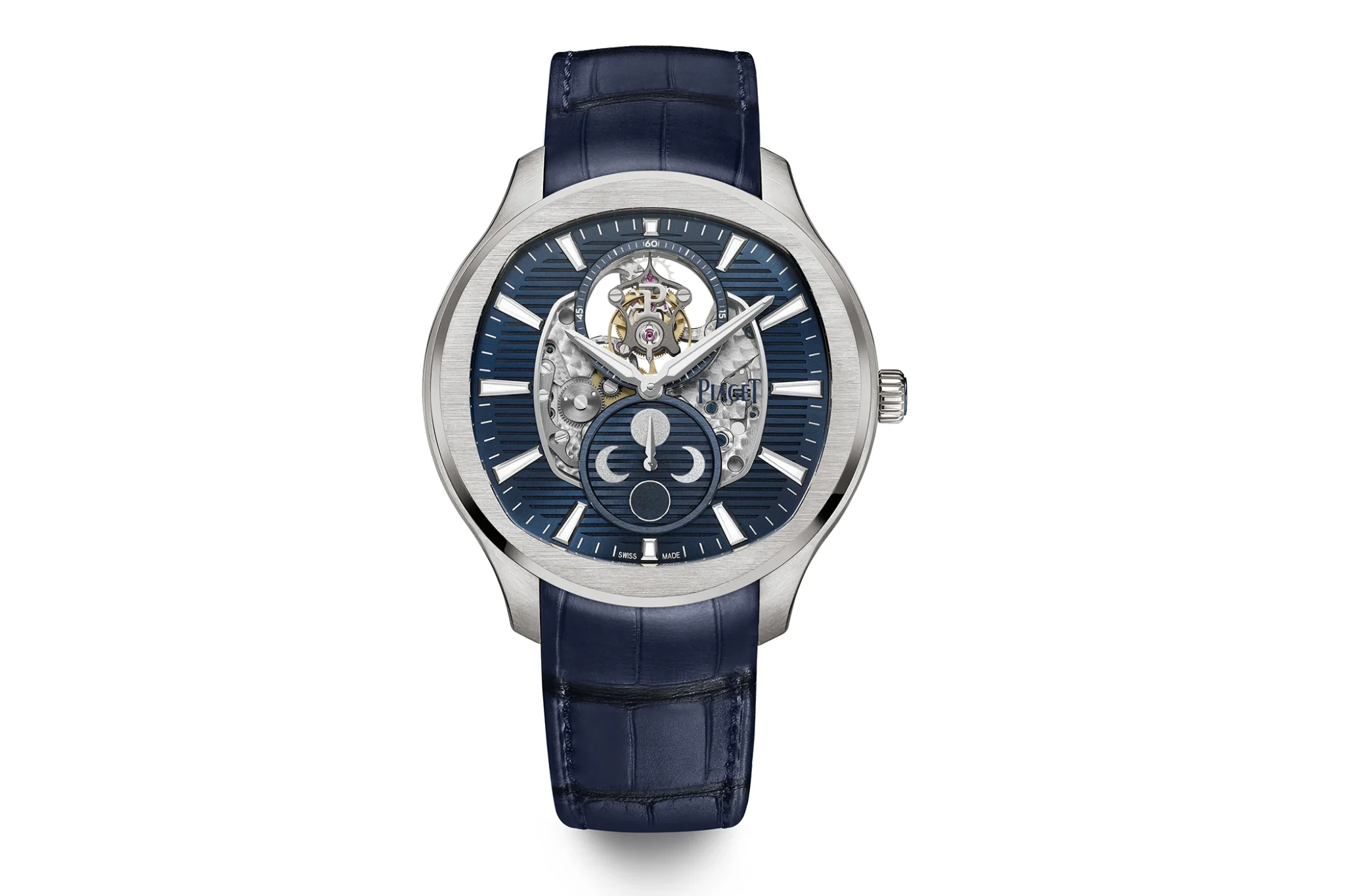
A turn of the timepiece provides the owner with another view of the flying tourbillon. It is the movement’s only component that is visible above the otherwise closed caseback. The tourbillon is framed by the semi-circular engraving of Piaget’s maxim ‘Toujours faire mieux que necaissaire’, which means ‘Always do better than necessary’ and refers to the brand’s high-level craftsmanship. The engraved brand crest below the tourbillon emphasises the manufacture’s rich history and underlines the Polo’s elegant side.
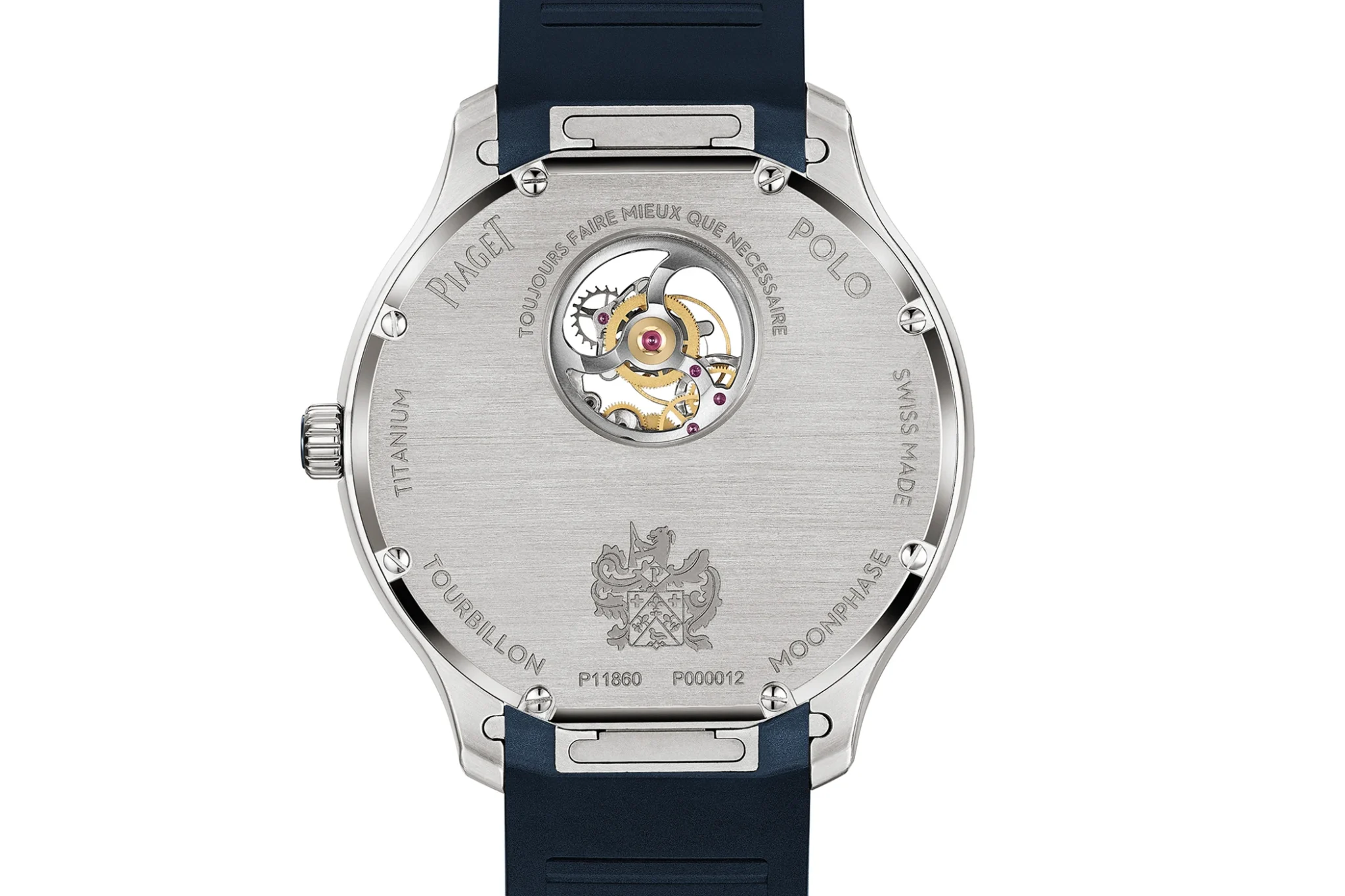
The cushion-shaped dial
The cushion-shaped dial is embedded in the titanium case and features an interplay of blue, grey, and gold colours. The minute markers on the blue gadrooned dial encircle the open-worked centrepiece of the Polo Flying Tourbillon Moonphase.
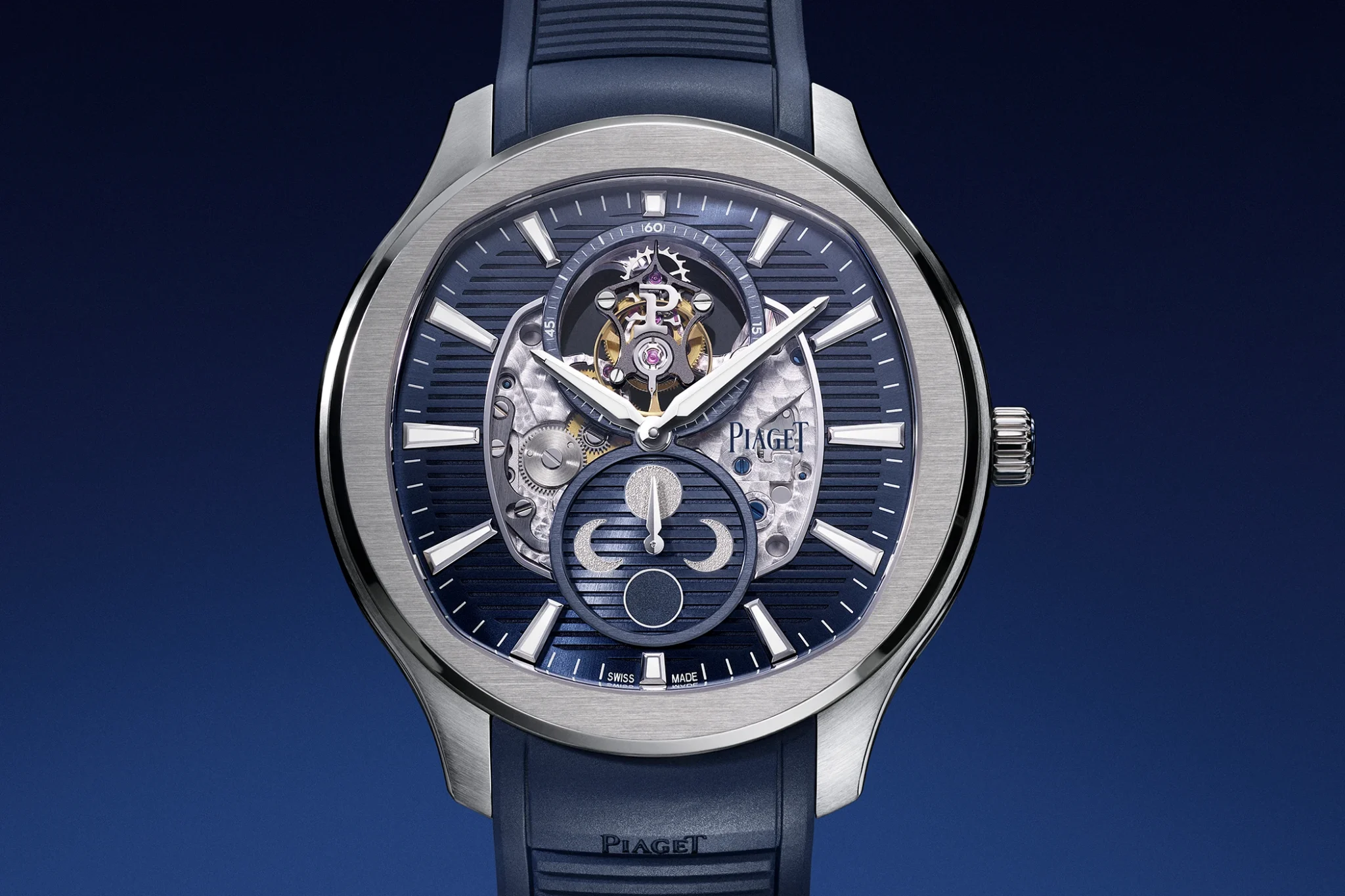
The calibre 642P shimmers above the cushion-shaped opening of the dial. It is adorned by perlage and, when viewed from a distance, is slightly reminiscent of the moon’s rocky surface. The flying tourbillon hovers above the movement at 12 o’clock with its delicately crafted P-shaped cage, which is framed by a blue ring for the small seconds.
The moonphase is displayed below the sword-shaped hands at 6 o’clock. On the blue gadrooned circular surface, a hand points to one of the four silver-coloured moonphases. With the exception of this hand, both the hour and minute hands and the indices are coated with light blue Super-LumiNova to guarantee optimum legibility even in difficult lighting conditions.
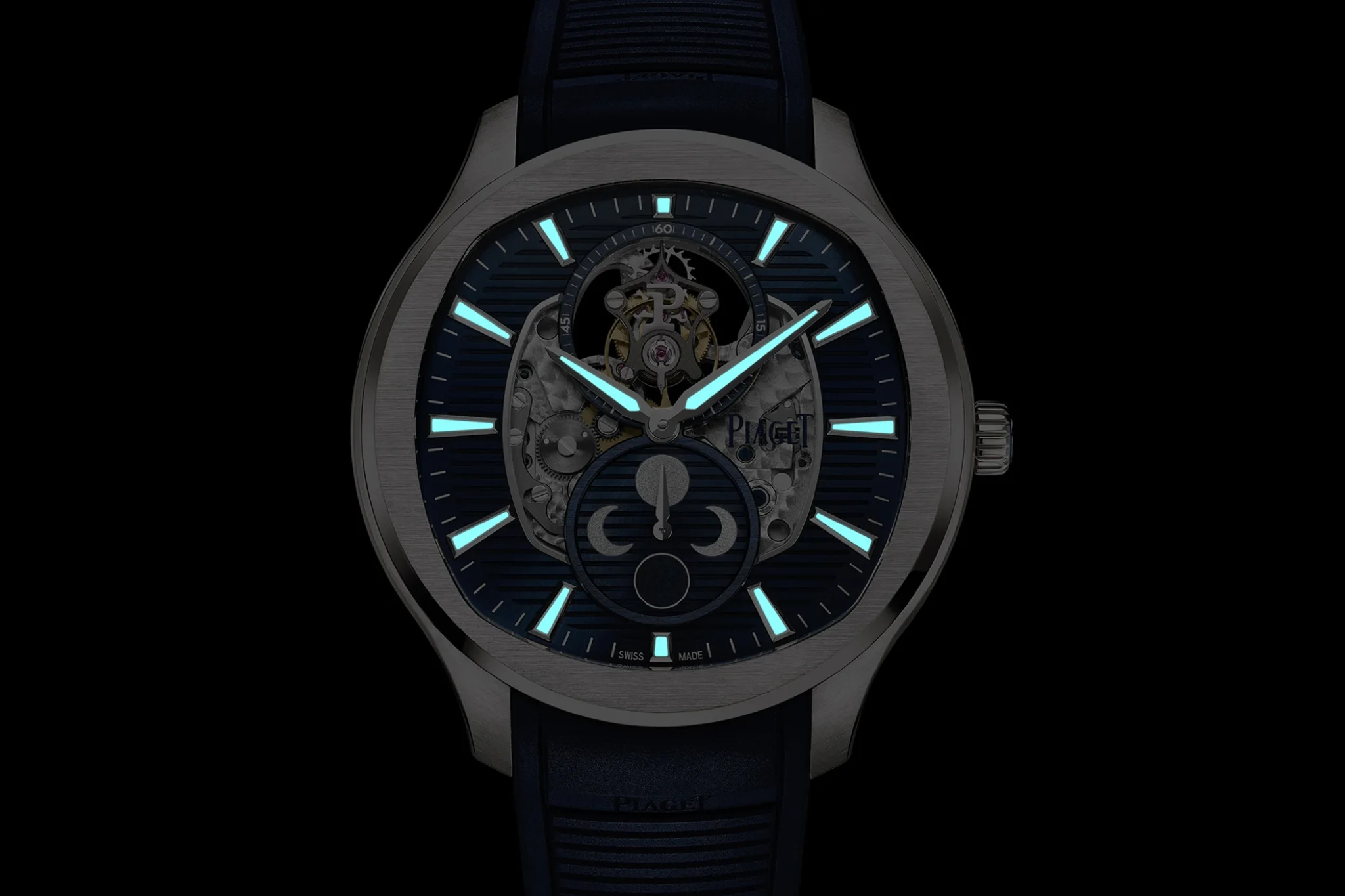
Ultra-thin masterpiece: The 642P calibre
At the heart of the Polo Flying Tourbillon Moonphase is the hand-wound calibre 642P manufacture movement. It is characterised by its impressive height of just 4 mm, into which the Piaget watchmakers in La Côte-aux-Fées were able to integrate the two complications.
The ultra-thin movement is based on the 600P calibre, which is equipped with a tourbillon and has been widely acclaimed as the heart of the thinnest tourbillon watch, the Altiplano Ultimate Concept. By adding the moon display with its components measuring just 0.5 mm in height, the Maison once again demonstrates its ability to offer high performance in the smallest possible space.
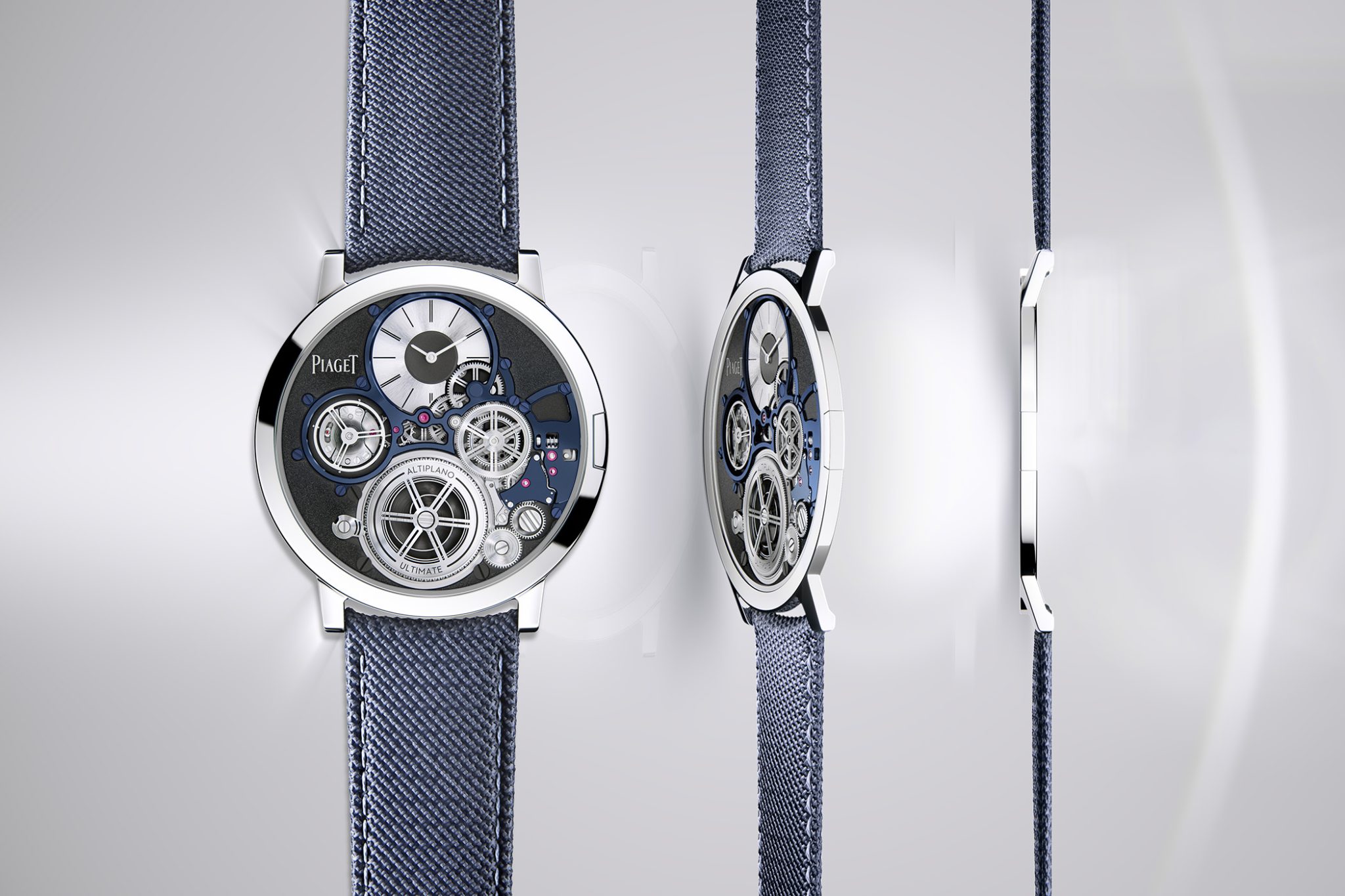
Astronomical accuracy
Despite its slim height, the Polo Flying Tourbillon Moonphase makes no compromises when it comes to functionality. With astronomical accuracy, the watch reflects the phases of the moon, whose cycle, similar to that of Earth, is slightly shifted due to its relative speed. A realignment via the corrector at 9 o’clock should only be necessary in 122 years, when the difference between the display and the celestial phenomenon has reached one day.
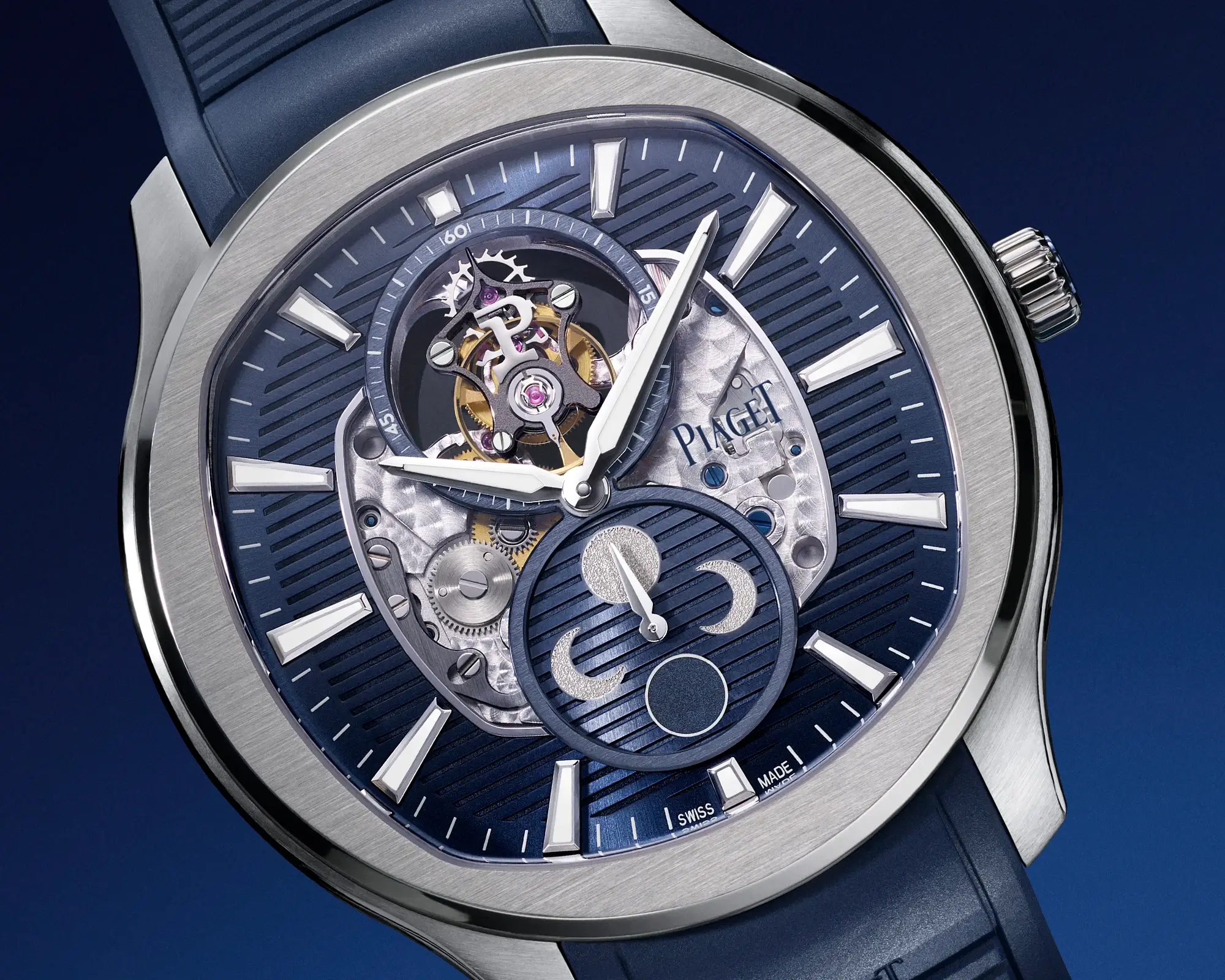
Two straps for more versatility
The timepiece is complemented by a rubber strap, which picks up on the matching elements of the dial with its dark blue colouring and gadroons. This choice of material also emphasises the lightness of the titanium case and improves wearer comfort. The Piaget emblem embossed on the back also provides a charming detail. For a more sophisticated look, the rubber strap can be replaced with the additional blue alligator strap supplied.
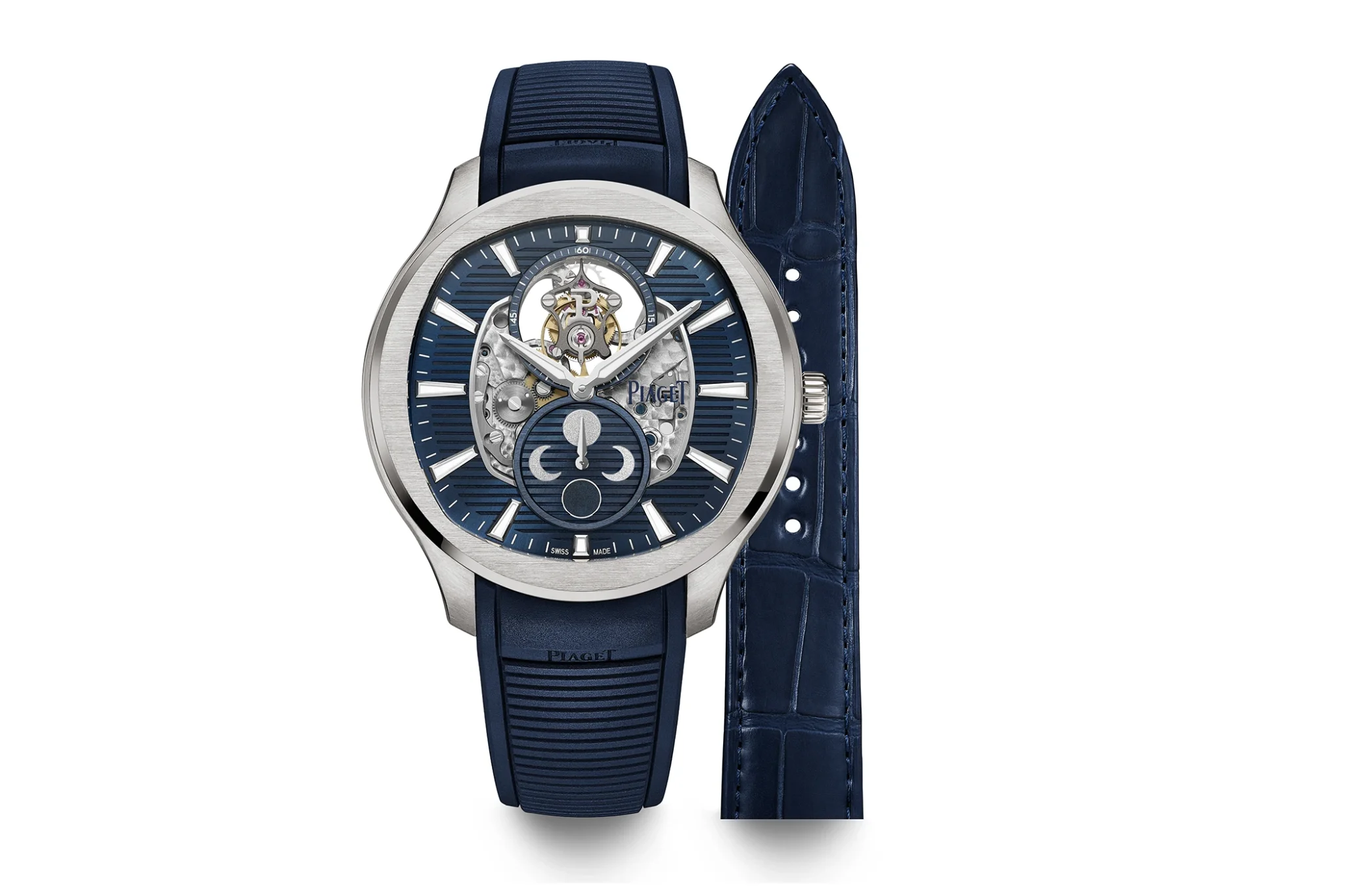
Sporty-sophisticated harmony
The Polo Flying Tourbillon Moonphase is an important addition to the Polo series and draws attention with its geometric and colourful interplay. The combination of cushion and circular shapes together with Piaget’s typical blue hue and silvery grey create a harmonious overall look. While the titanium case, the gadroons and the rubber strap add to the timepiece’s sporty charm, the open-worked movement with its decorations and large complications is a testament to the highest level of craftsmanship. The timepiece is available for 111,000 euros.
